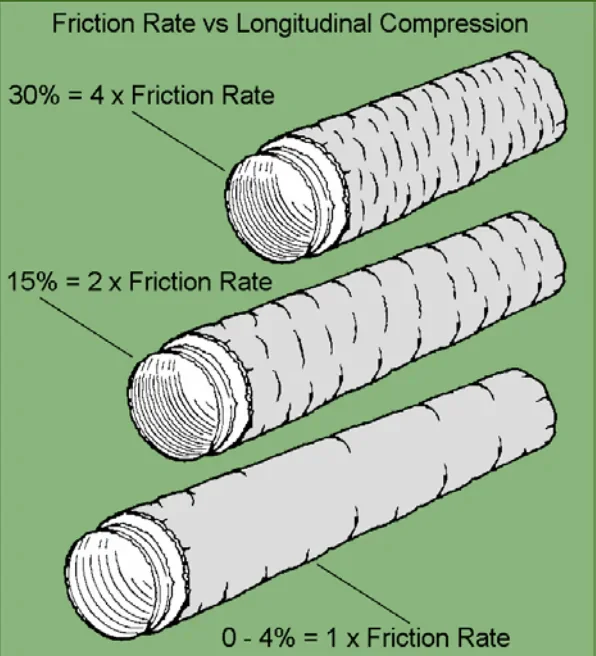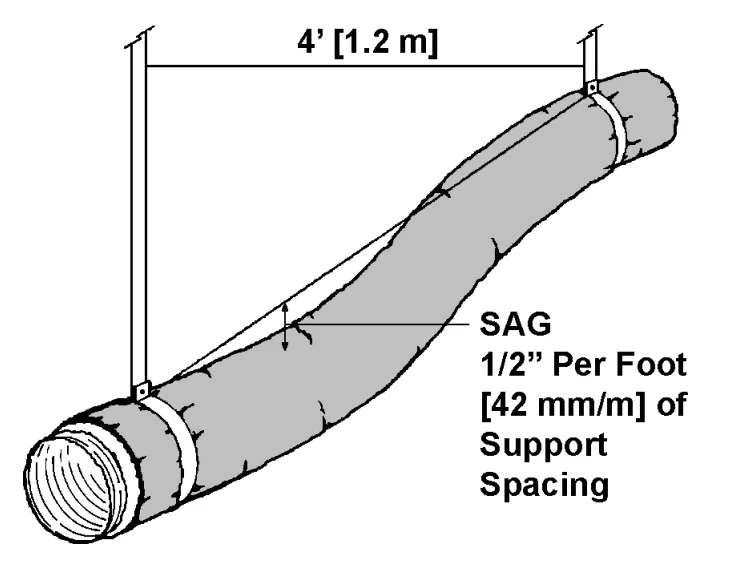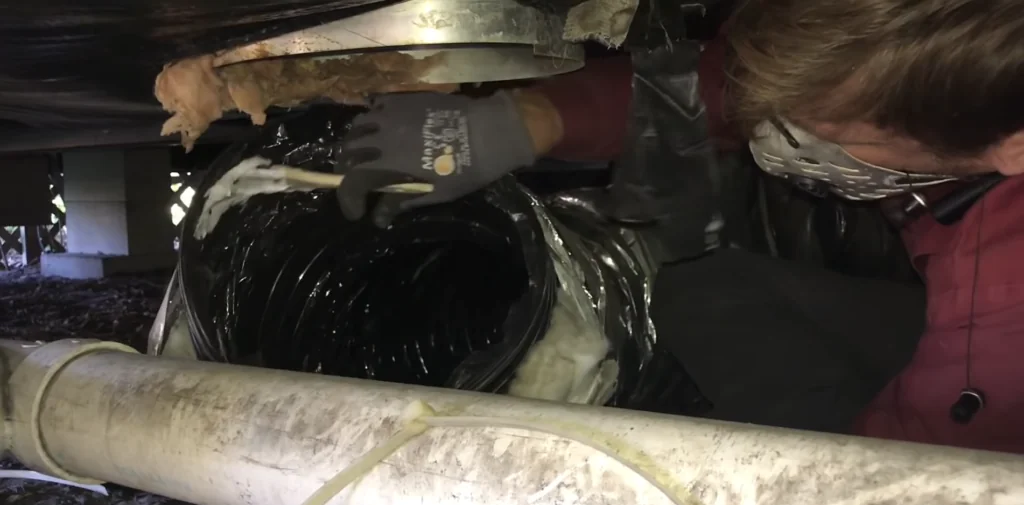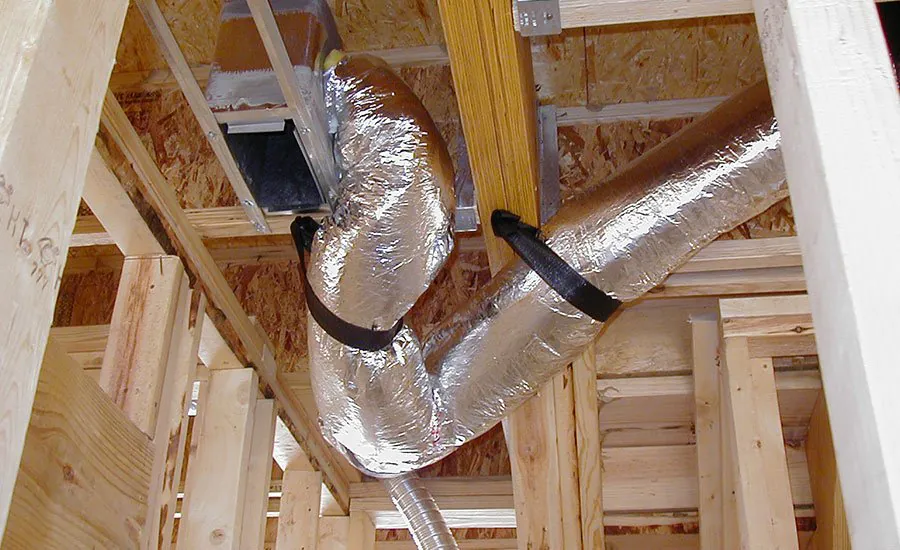If you own a home or business in Florida, there’s a very high chance you’ve seen flex ducts. Those ducts look kind of like slinkies covered in aluminum foil. They are excellent for our hot climate, as they are lightweight and fully insulated.
Despite these ducts’ widespread usage in Florida, they are controversial in the HVAC industry. Many technicians and contractors won’t touch them with a ten-foot pole. However, flex ducts are a staple in Floridian homes and commercial buildings alike.
In general, flex ducts are fine by themselves. They can be just as effective as sheet metal ducts and work exceptionally well in hot climates. The main problem comes from contractors cutting corners during installation.
So, how can you distinguish between good and bad flex duct installation? Today, we’re going to help you spot poorly installed ductwork. With this knowledge, you may be able to determine if your flex ducts are partially to blame for discomfort in your home.
Table of Contents
GENERAL CHALLENGES OF DUCTS
Ducts can make or break your A/C system. Although ducts are essential for moving the conditioned and unconditioned air in your home, they decrease the efficiency of your A/C system through leaks and friction.
Flex ducts are not necessarily more susceptible to leaks or friction on the surface. However, improper installation will make leaks or friction a lot worse.
Sheet metal ducts tend to be boxy, so it’s pretty easy to seal them up where one piece starts and another one ends. However, flex ducts are cylindrical and flexible. Even though they’re great for fitting into tight or oddly designed spaces, sealing them can be challenging. Consequently, incomplete or improper duct seals result in leaks.
Friction in a standard duct is pretty constant. However, friction varies in flex ducts. The rate of friction in flex ducts has a lot to do with the ducts’ design. So, you can typically see sources of inefficiency due to friction with the naked eye. Friction in a flexible duct system will depend on duct extension, the duct’s support system, and the curves in the ductwork.
PROPER EXTENSION OF THE DUCTS

As we just said, friction is a major source of inefficiency in a duct system. Friction occurs when the duct’s sides slow down the air in the duct. Sometimes, the air slows down so much that it doesn’t make it to the other side.
The more compressed a flex duct is, the more folds there will be on the inside. So, there is a lot more friction for the air to overcome. As you can see in the graphic above, compressed ducts may result in up to FOUR TIMES the friction and air resistance as a fully extended duct!
So, the extension of the duct is one of the keys to proper installation and good airflow. Flex duct is compressible to fit in challenging areas, but the compressibility is easy to abuse. A lazy contractor may not bother cutting off any excess flex duct after connecting it from point A to point B. Instead, he may simply compress the duct.
Cutting off merely 2-6 feet of the duct to make room for a full extension can make a huge difference. That difference in friction will save home and business owners LOTS of money on their electric bills per year.
PROPER STRAPPING AND SUPPORT

Sometimes, ducts can’t just travel along an attic floor. Some flex ducts need proper supports and strapping, especially in commercial spaces.
Proper strapping and support are tricky, as the building codes may allow some undesirable practices. One of these practices is allowing the ducts to sag between straps/supports. Sagging affects the static pressure of the air inside the ducts, which decreases the airflow.
All flexible ducts will probably sag a little bit, but they should NOT create a U-shape. According to Energy Vanguard’s guide to duct installation, the best practice is to limit sagging to 0.5 inches per foot between supports. Of course, the contractor should follow the duct manufacturer’s recommendation for the spacing between supports, but the spacing should not exceed 4 feet. I understand that these numbers are small and may be difficult to see. However, you can definitely tell that something is wrong if you see a big U-shaped sag.
When it comes to strapping, the width of the straps that hold the ducts should not exceed 1.5 inches.
CURVES IN THE DUCTWORK

Remember when we discussed friction? Curves in the ductwork cause the duct lining to scrunch up, increasing friction AND the distance the air needs to travel. Those curved areas of ductwork are rather ineffective.
Since curves severely reduce the effectiveness of the duct, the goal should be to keep all curves short and tight or minimize curves altogether. When a curve is unavoidable, such as in the diagram above, you can minimize bad effects by keeping the ductwork extended and well supported.
The duct on the right has poor support, is longer than the one on the left, and shows signs of compression. If your ducts look like the right example, then your A/C system may be working harder than it needs to.
PROPERLY SEALING FLEX DUCTS

Determining if your ducts have been sealed correctly is a challenge. You may be able to see rings of mastic on the outside of your duct. That should mean that the ducts are sealed, right?
Not necessarily. Building inspectors indeed look for mastic on the outside to determine if the duct system meets the building code requirements. However, mastic on the outside merely speeds up the formality and doesn’t indicate the effectiveness of the seal. Mastic on the outside is not necessarily effective because you can’t tell how secure the seal is on the inside.
While we do use mastic to seal the ducts, we do it on the INSIDE of the duct. In the image above, you can see Bert applying mastic to the inner lining of the duct under a customer’s trailer. Another process is to apply mastic to the collar and slide the inner lining over; this is the preferred method when the collar is easy to access (i.e., not under trailers).
CAN AN A/C CONTRACTOR HELP WITH MY FLEX DUCTS?
Yes!
At Kalos, we can perform tests that determine the leakiness of your ducts. If you have detached, leaky, or poorly constructed ducts, we can inspect your ducts and determine how to proceed.
Having a professional come out to examine your ducts and propose a solution can reduce your electric bill and make your comfort more consistent.
Get an inside look into Kalos’s training regimen by watching the video of a duct installation training meeting below. Kalos’s president, Bryan Orr, leads the meeting and makes sure our technicians are up to date on best practices at all times. To learn more about Kalos’s founders’ vision for promoting excellence in technicians, check out this post.






